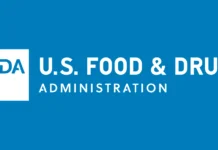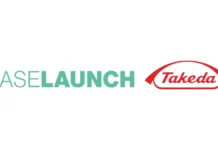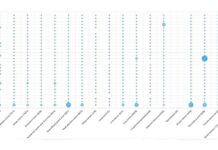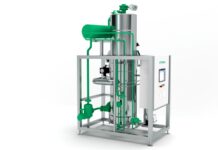Dr. Oliver Okle is a product and service manager at Vetter
The global CDMO market is projected to more than double from $161 billion in 2023 to $322.76 billion by 20331. This is only a portion of the rapid growth weŌĆÖre witnessing in the broader pharmaceutical and biotech industry, driven by innovation and increased investment in research and development (R&D)2. This growth underscores the need for CDMOs to invest in advanced infrastructure, technologies, and process optimizations to stay ahead in the evolving market. In this interview, Dr. Oliver Okle, Product and Service Manager at Vetter, a globally operating CDMO, discusses the importance of trend scouting and how it helps outsourcing partners stay competitive.
Dr. Okle, what are the key factors driving the rapid expansion of the pharmaceutical and biotech industries?
In my experience, the primary drivers are innovation and increased R&D investment. The significant growth in the CDMO market, and the rise in R&D spending, which is noted in DeloitteŌĆÖs recent annual report, highlight the industry’s commitment to optimizing processes and developing new and innovative solutions for patients around the globe. Additionally, advancements in technology, such as the integration of artificial intelligence (AI) in the drug manufacturing process, enable faster time to market which are allowing drug developers to bring both blockbuster drugs and orphan drugs to patients who rely on them in a quick and simultaneous manner. The increasing demand for personalized medicine and the development of innovative biologic molecules are also contributing to this growth and CDMOs need to adapt to produce complex and specialized products without jeopardizing their ability to manufacture the top sellers which remain critical to patients.
Given this rapid growth, how crucial is it for CDMOs to adapt to changing market demands?
It’s absolutely essential. Outsourcing partners continuously need to evolve their service offerings to meet the shifting needs of their customers and changing regulatory requirements. This requires a forward-thinking mindset and the ability to anticipate and address potential challenges before they arise. If a CDMO cannot forecast potential challenges that may arise throughout the manufacturing process and successfully mitigate their impact, they are not a critical solution to the challenges facing drug developers. On the other hand, it is important to consider wisely which new services or methods are implemented in the existing portfolio, as these can be very volatile and may not become a permanent fixture in the drug manufacturing process. Overextending resources or capabilities to adopt trendy methods may initially attract customers but can leave CDMOs unable to prioritize longstanding and reliable business. This makes careful analysis of any potential new process or tool a crucial element of the advancement of a CDMO. Moreover, staying agile and responsive to regulatory changes is crucial, as compliance with evolving standards ensures the safety and efficacy of pharmaceutical products. By fostering a culture of continuous improvement and innovation, you can maintain your competitive edge and deliver high-quality solutions to your clients that adhere with modernized best practices.
Can you elaborate on the trend scouting process and its importance?
We use trend scouting as a strategic approach because is not just about identifying emerging trends but also about understanding their potential impact on the industry. By implementing a strategic, considerate, and proactive approach to trend forecasting, we can effectively weigh the benefits and challenges of potential trends, invest in those most aligned with our customer needs far enough in advance to be an early adopter, and avoid the allocation of time and resources in trends that will not provide meaningful return on investment (ROI). This approach enables us to prepare for future market shifts and adapt our strategies accordingly. By continuously monitoring and updating our trend radar, we can stay ahead of industry developments and maintain a competitive edge. This proactive stance allows us to be agile and responsive to changes, positioning us to meet the evolving needs of our clients effectively. Given the long timeline required to implement a new technology in the drug manufacturing process while adhering to quality and regulatory standards ŌĆō roughly 8-10 years ŌĆō a forward-looking trend identification system is the difference between an industry leading CDMO and a service provider of the past.
What methods do you use to identify and evaluate trends?
We gather information from a variety of sources, including conferences, academic journals, new datasets, studies, and customer meetings. We also absorb information from sessions and discussions at trade shows, evaluations of new technologies, and conversations with industry experts. This comprehensive approach helps us get a holistic view of emerging trends from those most entrenched in their uses. By systematically comparing trends and creating a comprehensive trend radar, we can predict market developments and derive necessary actions from the most relevant trends, while strategically passing on trends that will not provide meaningful value or ROI.
How do you balance qualitative and quantitative research in your trend scouting efforts?
Both qualitative and quantitative research are crucial in trend scouting efforts. Quantitative data from market reports, regulatory feedback, and statistical analyses provide a solid foundation for understanding broad market trends and measuring their potential impact. This data helps us identify patterns, forecast market developments, and make data-driven decisions. For example, we analyze market growth rates, investment trends, and technological advancements to quantify the potential value of emerging trends in relation to securing new customers and expanding relationships with existing customers.
On the other hand, qualitative research adds depth and context to these findings. Insights from interviews, customer conversations, and conferences allow us to understand the nuances and underlying factors driving these trends. Qualitative data helps capture expert opinions, customer needs, and industry sentiments that are not always evident in quantitative data. By combining these two approaches, we can create a comprehensive and well-rounded view of the market. Qualitative data is especially valuable because it serves as direct feedback from our customers which provides us with irrefutable perspectives of our most critical stakeholders.
Additionally, qualitative research validates and interprets quantitative findings. For instance, if quantitative data indicates a rising trend in a particular technology, we conduct interviews with industry experts and stakeholders to understand the practical implications and potential challenges of adopting this technology. This balanced approach enables our trend scouting to be both data-driven and contextually informed, enabling us to make strategic decisions that align with our clientŌĆÖs needs and the realities of the market.
Can you share an example of successful trend scouting at your company?
One example is our early investment in prefilled syringes in the 1970s. When prefilled syringes first entered the market in the mid-20th century, it marked a significant advancement in global injectable technology. We anticipated early on that patient-friendliness would be the future of this market and were therefore well-prepared when prefilled syringes became the industry standard.
More recently, we leveraged trend forecasting to prepare for the impacts of the new EU GMP Annex 1. While the industry was provided a one-year period to prepare, we understood that it would require much more time to fully predict the impacts, risks and potential benefits. We began monitoring the status and development as soon as the revision was originally announced, enabling us to establish a program tied to Annex 1 years. As a result, we launched an evaluation immediately following the publication of the revised Annex 1. By proactively communicating our approach to current and potential customers, it prevented a lag in our manufacturing processes that could have resulted if we were left catching up to new regulations.
What challenges do you face in trend scouting within the biopharma industry?
The life sciences industry has innately special requirements for the implementation of new methods due to regulations and required risk management. With patient safety as the top priority, trends donŌĆÖt emerge and permeate as quickly as they do in other industries.
It’s important to focus on long-term trends and not just short-term developments. Additionally, the dynamic nature of market needs means that trends can rise and fall, sometimes disappearing for a while only to re-emerge later with renewed enthusiasm. This requires continuous monitoring and a flexible approach to adapt to these changes effectively. Comprehensive trend scouting practices help prevent a CDMO from missing any crucial topics and allow the focus to remain on getting ahead of lengthy implementation timelines while prioritizing quality control and regulatory adherence.
Finally, how do you see the future of the biopharmaceutical industry?
I am sure that the future of our industry is very promising. By conducting comprehensive trend tracking, companies can benefit from becoming early adopters of emerging trends by integrating new technologies and methods into their supply chain long before they become the industry standard.
Our strategically anchored proactive approach helps us meet future customer needs and maintain our competitive edge. Additionally, the continuous advancements in technology and methodology will drive further innovation, enabling more efficient and effective solutions in drug development and delivery.
As the industry evolves rapidly, collaboration and strategic partnerships will become increasingly important to address complex challenges and seize new opportunities in an attempt to provide potentially life-saving medications to the individuals who need them.




















